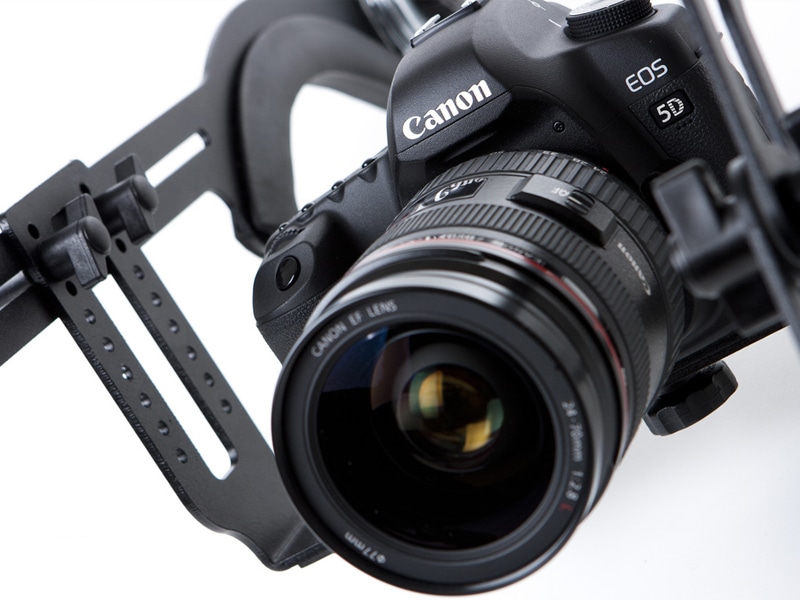Most digital SLR cameras today offer the ability to record video , almost always in High Definition. Photography and video converge in the same machine, thanks to the digital support that facilitates this union.
Although many photographers from the purist school prefer to use their cameras exclusively to produce photos, leaving video tasks for cameras especially video cameras, it is true that more and more ordinary users are making video an important selection criterion. when choosing your next camera. Surprisingly, the video recorded with SLR cameras has been able to reach quality levels similar to or even higher than those of specialized video cameras in a very short time. By way of example, the last chapter of the extremely famous television series HouseIt was shot entirely with a Canon EOS 5D Mark II.
In today's article I will explain the aspects that you have to take into account when evaluating the video function in a digital SLR camera . If the video function is very important to you, these will be the criteria that you will have to take into account to make the right choice.
VIDEOREFLEX: TO WHET YOUR APPETITE
First, if you're not entirely convinced that shooting video with an SLR camera is a good idea, check out the video I've included at the end of my Nikon D5100 article I posted last week . It is a short film recorded entirely with an SLR camera with a price of around 800 euros.
As you may have seen, the quality of the film is impressive. In fact, today there is a whole industry of accessories around SLR cameras, an industry that consists of equipping SLR cameras with grips, larger screens, robust tripods, external microphones, and any accessory that helps the camera SLR do a good job of recording video [as can be seen in the following video].
HD OR FULL HD VIDEO
For those who are not clear about these two terms, HD means High Definition . It is a standard for video quality and offers quite decent video quality. Full HD is also another video quality standard but higher than HD . To give you an idea, HD quality divides the image into 720 horizontal lines while Full HD divides it into 1080 lines. Normally the more lines resulting from this division, the higher the quality.
Obviously these lines are not noticed with the naked eye.
VIDEO LENGTH
The duration of the video is a very important issue. Some very affordable priced cameras like the Nikon D3300 offer video recording function but limited to 10 minutes each video. Other cameras are more generous in this regard and go beyond 10 minutes but as a general rule and to this day I have not heard of any SLR camera whose video recordings exceed 30 minutes . It is seen that this is the maximum time per recorded video that is allowed in all SLR cameras. The reason is that due to commercial issues, taxes and tariffs, if a camera records video of more than 30 minutes it is considered a video camera and therefore that will increase its tariffs/taxes and consequently raise its price.
FPS, FRAMES PER SECOND
As you well know, and if you don't know I'll tell you, a video is really nothing more than a sequence of frames . Generally, most videos and film and television productions are recorded at a frequency between 24 and 30 fps (frame per second). In general.
How useful is this data? Well, normally the higher the fps value, the more natural the movement and action in the video will be. Instead, the smaller the fps, the more "choppy" the scene will appear.
If this sounds like Chinese to you, it is best to check it yourself through an example. An example is provided on this page.in which you can select the Fps and watch the video with that fps. You will see that the more you raise the fps value, the more natural the secretary's movement is.
EXTERNAL MICROPHONE
If you are considering recording video with your SLR camera very seriously , or perhaps editing your first short film, you may be interested in taking into account the external microphone.
The quality of the microphone built into the camera itself often leaves a lot to be desired, especially when we want to do something serious or professional. My recommendation is that if you are interested in video, always choose a camera with an external microphone connection . The quality of a specialized external microphone will be much better, plus you will avoid noise from the focus motor being heard during lens autofocus attempts.
SPECIALIZED TARGET
There are specialized lenses for SLR video. They are ultra-silent lenses, that no matter how much they move, zoom and focus, they do not produce the slightest noise.
On the other hand, a great advantage of video SLR compared to normal video cameras is that in the SLR world we have large aperture/diaphragm lenses , which offer us an impressive effect of depth of change. Of course, these objectives are usually rather expensive, so a normal objective could also fulfill the mission.
AM I FORGETTING SOMETHING...?
Have you already used the video from your reflex camera? What opinion do you deserve? Do you think there are more aspects to take into account that I have not mentioned above? I would appreciate a comment on the subject.


